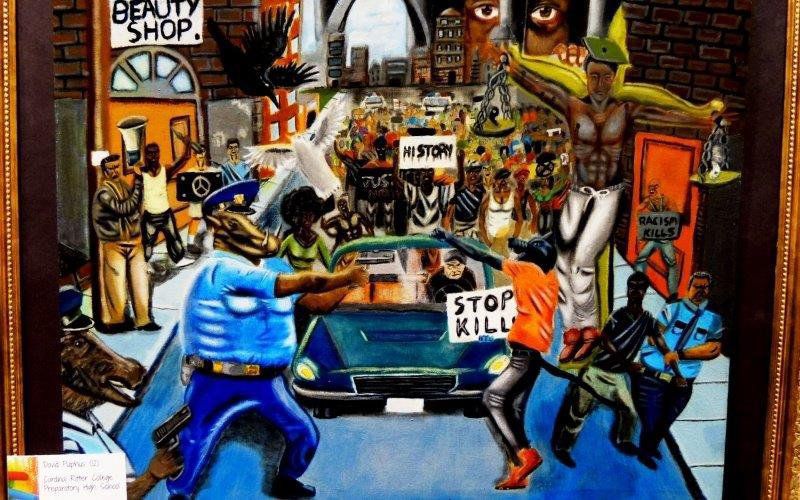 A District of Columbia circuit court judge has ruled against Rep. William Lacy Clay and David Pulphus, the 19-year-old Missouri man who sued the federal government after his painting depicting a civil rights demonstration was removed from display in a Capitol office building multiple times by other members of Congress. Clay and Pulphus announced in a joint statement last week that they will appeal the case.
A District of Columbia circuit court judge has ruled against Rep. William Lacy Clay and David Pulphus, the 19-year-old Missouri man who sued the federal government after his painting depicting a civil rights demonstration was removed from display in a Capitol office building multiple times by other members of Congress. Clay and Pulphus announced in a joint statement last week that they will appeal the case.
The untitled painting had hung undisturbed alongside other student art contest winners for more than six months before it became a political bone of contention in early January. Pulphus’ work depicts a protest march foregrounded by a police officer aiming his weapon at an unarmed subject. At least one officer in the painting is shown with the head of a boar, while his target appears to be a wolf or black panther, as The Hillsuggests. Also prominently featured in the painting is a young African American man crucified on the scales of justice, and protest signs such as “RACISM KILLS.” Pulphus completed the painting while he was a student at Cardinal Ritter College Prep High School in St. Louis.
The painting raised no outside notice until January, when Fox News’ Eric Bolling urged viewers to call Rep. Clay or their own Congressional representatives to demand that it be taken down. Clay staunchly refused to censor the work, but California Rep. Duncan Hunter literally took matters into his own hands, unscrewing the painting from the wall and then depositing it with Clay’s office staff. Since then, the work was restored by Rep. Clay and removed by other House members multiple times.
Finally Architect of the Capitol Stephen Ayers, who oversees the building and grounds, acquiesced to a formal request from Speaker Paul Ryan to remove the painting on the grounds that it does not conform to one of the Congressional Art Competition’s rules barring “exhibits depicting subjects of contemporary political controversy or a sensationalistic or gruesome nature.” Since that time the painting has hung in Rep. Clay’s own office.
Pulphus and Rep. Clay sued to have the painting restored, but Judge John D. Bates ruled on April 14 that the Congressional Art Competition as a whole constitutes government speech rather than a public forum, and thus the government “retains editorial control over the art submitted in the competition.” That argument would be more convincing, of course, if anyone had exercised that editorial control when the paintings were initially selected for display last June, rather than singling out one painting after it drew media attention.
After the ruling, Pulphus and Rep. Clay issued a joint statement signalling their intent to take the case to the U.S. Court of Appeals:
Our nation was founded on the very principle of freedom of speech, and there are few places where that core freedom warrants greater respect than the U.S. Capitol. That is why we are confident that the U.S. Court of Appeals will eventually vindicate not only our legal rights, but those of the American people. We believe our Constitution simply cannot tolerate a situation where artwork can be removed from the Capitol for the first time ever as a result of a series of ideologically and politically driven complaints.
Judge Bates’ full decision can be found here.